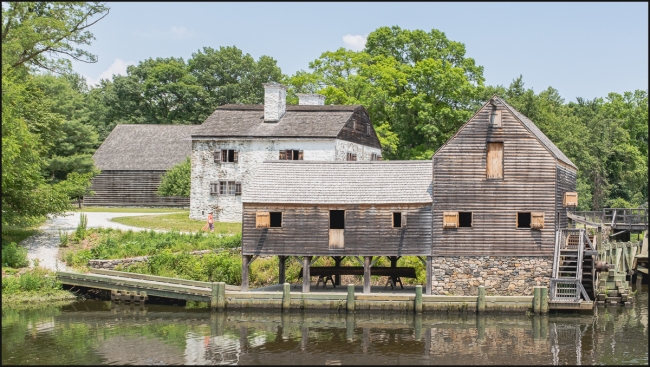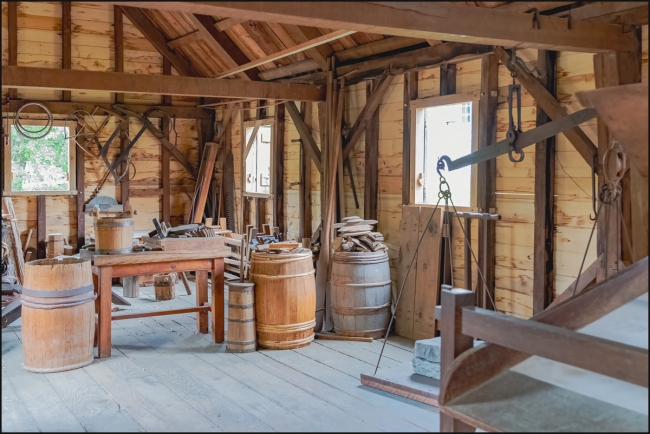The Coooper’s House. You can see it in the first picture to the left of the mill. It’s attached to the mill, but serves a completely different purpose. After the corn was milled it was put into sacks and barrels, transferred to boat on the Pocantico River. From there it made a short trip to the Hudson River and then along the river to be sold and/or delivered.
“The word “cooper” is derived from Middle Dutch or Middle Low German kūper ‘cooper’ from kūpe ‘cask’, in turn from Latin cupa ‘tun, barrel’. Everything a cooper produces is referred to collectively as cooperage. A cask is any piece of cooperage containing a bouge, bilge, or bulge in the middle of the container. A barrel is a type of cask, so the terms “barrel-maker” and “barrel-making” refer to just one aspect of a cooper’s work. The facility in which casks are made is also referred to as a cooperage.
…
Traditionally, a cooper is someone who makes wooden, staved vessels, held together with wooden or metal hoops and possessing flat ends or heads. Examples of a cooper’s work include casks, barrels, buckets, tubs, butter churns, vats, hogsheads, firkins, tierces, rundlets, puncheons, pipes, tuns, butts, troughs, pins and breakers. Traditionally, a hooper was the man who fitted the wooden or metal hoops around the barrels or buckets that the cooper had made, essentially an assistant to the cooper. The English name Hooper is derived from that profession. With time, many coopers took on the role of the hooper themselves.” (Wikipedia).
Taken with a Fuji X-E3 and Fuji XC 16-50mm f3.5-5.6 OSS II


